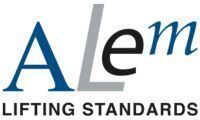- How Loading Bay Service Keeps Operations Moving Through Winter
- Warehouse and Loading Bay Dilapidations: What You Need to Know
- Stertil Stokvis Engineers Take on Banger Rally Challenge for Prostate Cancer UK
- Dock Bumpers: What They Do, Why They Fail, And How to Fix Them
- Common Industrial Sectional Door Faults - And How to Fix Them
- Repair vs. Replace: Deciding The Best Approach for Your Loading Bay Equipment And Industrial Doors
Dock Bumpers: What They Do, Why They Fail, And How to Fix Them
12/06/25 | News 2025
Dock bumpers might seem like a small part of a loading bay, but they play a big role in protecting both the building and the vehicles using it.
Designed to absorb the impact of reversing lorries, bumpers (sometimes called “pads” or “buffers”) take repeated hits day after day. And while they’re built for the job, they’re not indestructible.
Here’s what you need to know about dock bumpers:
WHAT ARE DOCK BUMPERS?
Dock bumpers are fixed to the concrete wall or dock edge on either side of a loading bay entrance.
Their primary purpose is to absorb the impact of reversing vehicles, preventing damage to the building structure and the vehicle itself.
To do this effectively, dock bumpers are made from durable materials like polyethylene (PE) or rubber, often mounted on a steel backing plate.
They’re designed to withstand the frequent, heavy impact of large vehicles and can perform well for years under normal conditions.
On the other hand, like all loading bay equipment, dock bumpers are subject to wear and can be damaged over time.
COMMON CAUSES OF DOCK BUMPER DAMAGE
1. General Wear and Tear
Over time, even the most robust dock bumpers will start to show signs of wear.
They’re designed to absorb repeated impact, and this eventually leads to compression, material degradation, or loosening of fixings.
Regular inspections are essential to spot these early warning signs before the damage worsens.
2. Driver Behaviour
The way drivers approach a loading bay can have a major impact on dock bumper lifespan.
Reversing too quickly or misaligning the vehicle can dramatically increase the force of impact.
In severe cases, this can damage the concrete fixing points, meaning the bumper plate can no longer be securely attached.
3. Trailer Height and Movement
Another common issue arises during departure:
When trailers are loaded, their weight increases and the vehicle body lowers.
If the trailer catches the top of the bumper on the way out, especially if the bumper has been incorrectly positioned, it can pull or shear the bumper away from the wall.
This not only damages the bumper itself but can also affect the wall or concrete fixings.
REPAIR AND REPLACEMENT OPTIONS
When your dock bumpers become damaged, there are several ways our engineers at Stertil Stokvis can help restore the area.
1. Welding Backing Plates
If the steel backing plate has come loose or the fixings have failed, engineers may weld the plate directly to the steel of the loading bay pit.
This provides additional reinforcement and extends the usable life of the bumpers.
2. Replacing PE Bumpers
In many cases, the polyethylene bumpers can be replaced quickly and easily with like-for-like components.
This is a cost-effective way to restore protection without major disruption.
3. Concrete Wall Repairs
If the concrete wall behind the bumper is damaged, this will need to be repaired before a new bumper can be securely installed.
Fixing a bumper to damaged concrete risks further issues and may reduce the effectiveness of the impact protection.
PREVENTION AND BEST PRACTICE
Looking after bumpers properly not only reduces the need for expensive repairs, but helps your business comply with important safety regulations.
To maximise the lifespan of dock bumpers and reduce the risk of downtime, it’s important to:
- Carry out regular inspections and maintenance checks.
- Position bumpers correctly to account for the height of trailers when loaded and unloaded.
- Encourage safe reversing practices among drivers.
- Consider upgrading to more heavy-duty bumper models in high-impact areas.
NEED DOCK BUMPER REPAIRS?
Dock bumpers are an essential part of your loading bay – and need to be kept in good condition.
So if you’ve noticed signs of wear or damage around your dock bumpers, our engineers are here to help.
Get in touch with the Stertil Stokvis team today to book a visit or request a quote.
Contact Stertil Stokvis on 0870 770 0471, option 2, option 4, or email helpdesk@stertil.co.uk.






